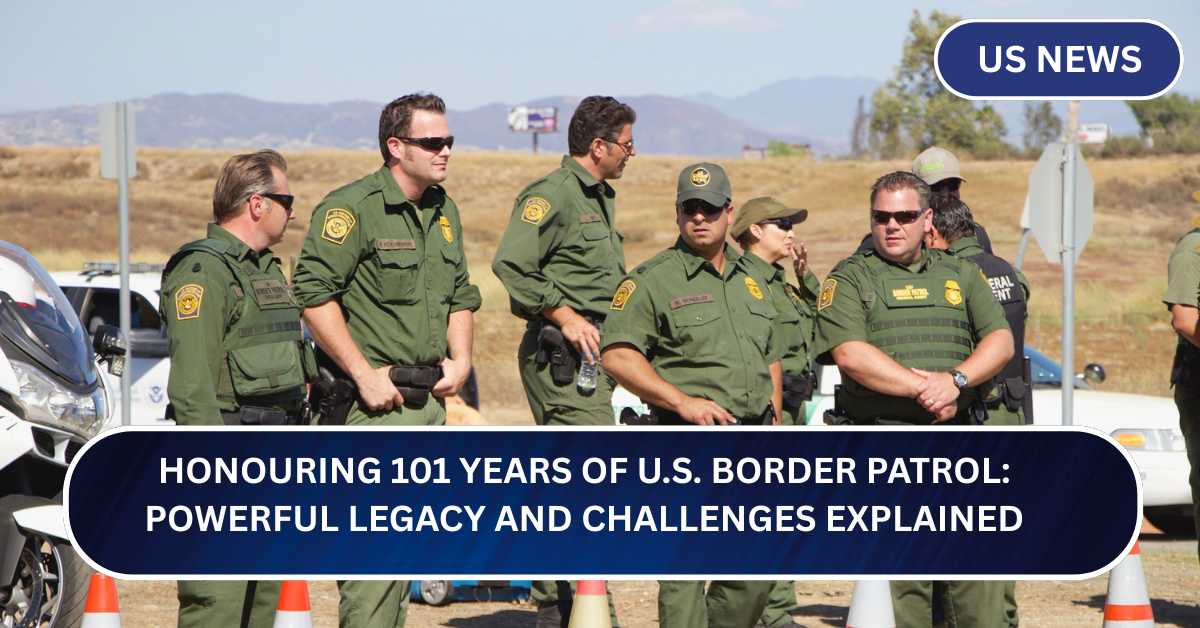The U.S. Border Patrol has completed 101 years of service in 2025. This milestone gives us a chance to reflect on the agency’s long journey, the work it does today, and how it fits into America’s efforts to manage immigration and national security.
How the Border Patrol Started
The U.S. Border Patrol was officially created on May 28, 1924, under the U.S. Department of Labor. Back then, its job was simple: stop illegal immigration and smuggling along the U.S.–Mexico border. With just a few officers and limited tools, early agents had to travel by horse and car, watching thousands of miles of land with very little support.
In its first year, the agency had around 450 officers. Most of them worked in Texas, Arizona, New Mexico, and California. Over the years, the agency grew, especially after 9/11, when national security became a top priority.
The Border Patrol Today
Now, in 2025, the U.S. Border Patrol is part of U.S. Customs and Border Protection (CBP), under the Department of Homeland Security (DHS). It has over 19,000 agents working on land, at sea, and even in the air to protect the borders of the United States.
Agents mainly work on two borders — the southern border with Mexico and the northern border with Canada. Their tasks include:
- Stopping illegal border crossings
- Preventing human trafficking
- Seizing illegal drugs
- Rescuing migrants in danger
- Using modern tools like drones, motion sensors, and cameras
In recent years, the agency has faced new challenges, such as large groups of migrants arriving from Central America, often with children. These situations are not easy — officers have to ensure the law is followed while treating people humanely.
Celebrating 101 Years of Service
To mark the 101st anniversary, several events were held across the country in June 2025. Current and former officers were honoured for their service. Families of fallen agents were also remembered. The events focused on bravery, sacrifice, and commitment to duty.
CBP Commissioner Troy A. Miller said in a statement: “For over a century, our agents have worked tirelessly to keep America safe. Their dedication is unmatched, and we thank every single person who has worn the green uniform.”
Controversies and Public Opinion
While many Americans see the Border Patrol as necessary for national safety, the agency has also faced criticism over the years. Human rights groups have raised concerns about how migrants are treated at the border, especially children. Some politicians have called for reform and more accountability.
Still, agents argue that their job is difficult and dangerous. They face extreme weather, risky confrontations, and high-pressure situations daily. Many believe more funding and better support are needed, not less.
The Road Ahead
Looking forward, the Border Patrol plans to invest more in technology and training. The agency wants to improve how it manages large groups of migrants, especially during humanitarian crises. There are also talks about making the hiring process more inclusive and modernising field operations.
The future of the Border Patrol will likely depend on both political decisions and real-life border conditions. As migration trends change, so will the agency’s focus and methods.
Conclusion
Completing 101 years is not just a number — it’s a symbol of dedication, growth, and change. From a small group of officers on horseback to a modern law enforcement force, the U.S. Border Patrol continues to play a key role in national security.
Whether praised or criticised, the agency remains at the centre of one of the most complex issues in American life: immigration and border control. The next 100 years will likely be just as important as the first.




